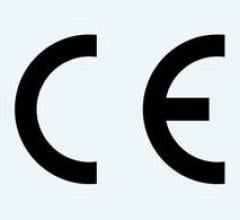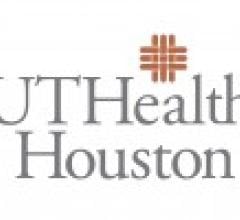
During robot-assisted heart surgery, a doctor sits at a remote console controlling the robotic instruments, which use small, precise movements to perform the surgery.
Transcatheter heart valves are viewed as the poster children devices representing the latest in cutting-edge cardiac therapy technology. For this reason, it is not surprising nearly all the readers’ nominations for DAIC’s “Most Innovative Heart Centers” included hospitals that created minimally invasive structural heart programs using the Edwards Sapien aortic valve and the Medtronic Melody pulmonary valve.
Implementation of these programs usually involves the creation of a hybrid operating room (OR) and close collaboration of numerous specialists using a team approach to evaluate patients and determine the best course of treatment. Various therapy approaches are used, which can all be performed in the hybrid OR in a single surgical session.
Mayo Clinic’s Cardiovascular Department in Rochester, Minn., is one such center that has successfully implemented a structural heart/transcatheter valve program. Maurice E. Sarano, M.D., FACC, FAHA, professor of medicine, Mayo Clinic, said the program has brought together quantitative and 3-D echo and computed tomography (CT) imaging, surgical and minimally invasive valve repair, use of a Da Vinci surgical robot, and close teamwork in integrated operative suites. He said this approach has improved patient outcomes by shortening their length of stay, allowing intervention on inoperable patients, improving survival and allowing them to return to work.
The program has also increased patient volume, as savvy medical consumers seek out these latest treatments.
“In valvular heart disease, that is where we have seen the most innovation – the practice is really being transformed,” Sarano said.
Mayo converted one cath lab into a hybrid room three years ago and is now exploring construction of a dedicated hybrid OR. In addition to Mayo’s implantation of both the transcatheter Sapien and Melody valves, it expanded its transcatheter structural heart program to include patent ductus arteriosus (PDA) closure for the treatment of paraprosthetic regurgitation.
Change in Attitude, Not Just Technology
“The therapeutic changes were associated with a change to a team approach, where all the people involved sit down in a room to discuss what is best for the patient,” Sarano said. “Where the practice is going is collaboration. The surgeons used to only have one way to treat, with a sternonomy, but now we have options, including transapical, transfemoral and small and large sternonomy. Now you have solutions to treat different patients with various conditions.”
Mayo specialists review patient cases collaboratively to determine if a patient qualifies for a transcatheter valve or if another approach would be more appropriate.
“With all the implementation of this technology, we have a team of physicians who review all the data to decide how best to treat a specific patient,” he explained. “What people are looking for in heart valve disease is the team approach – not just one man who is very good who can get things done one way. You need the team approach. That is the human part of improving care at centers. It’s not a question of do you have a stent or another device on the shelf to put into a patient.”
Experience Counts
Data from various registries and clinical device trials consistently show there is no substitute for experience in performing procedures with complex, new devices. The greater an operator and center’s experience with a particular procedure or device, the better the outcomes.
For this reason, Sarano said expertise with some technologies, such as transcatheter valves, should be concentrated in a smaller number of centers to enable increased procedural volume. As an example, he said centers that only perform 10 mitral valve procedures a year will never become as good as centers that perform many more.
As part of its implementation of new technology to enable less-invasive cardiac procedures, Mayo aggressively implemented use of the Da Vinci surgical robot.
“What you are doing with the robot is a new way to treat patients. It’s not the same movements as when you are using your hands, so there is a learning curve,” Sarano said. For that reason, he said surgeons start with easier cases to gain experience and maintain patient safety. Then, as they gain experience, they move on to more complex cases. “It’s all about the experience of the operators,” he explained.
Patient demand is driving increased use of these minimally invasive procedures. Sarano said this increasing case volume will increase physician experience, helping drive better outcomes, fewer complications and reduced procedure times.
What Patients Want
Less invasive procedures have increased the number of referrals to Mayo. The center has seen a 9 percent increase alone in minimally invasive valve cases.
“The percutaneous approach to heart valve repair is very appealing to patients,” Sarano said. “The patients want a small scar and what we want are durable results. We have been able to marry these results.”
Sarano said outcomes for percutaneous valve recipients are outstanding, compared to the alternative therapies for these non-surgical patients, which are not very effective.
Reducing Healthcare Costs
Sarano admits robots and transcatheter valve technologies are expensive, and hybrid procedures frequently require more surgeons and specialists than would be used in normal surgical or interventional procedures. For these reasons, hybrid procedures are not less expensive than conventional surgery. However, he said the time for recovery and ambulation are much faster, so hospital stays are reduced, which is where potential cost savings will come.
“It has the potential to reduce the costs if we reduce the amount of time patients spend in the hospital,” Sarano said. “It’s too early to tell, we need more patients to collect more data. But, it appears we are reducing the time patients are on ventilators and they are being discharged earlier.”
Procedures Demand Additional Imaging
Advanced, minimally invasive procedures also require more than good angiography imaging systems and a hybrid room, they require other detailed imaging from computed tomography (CT), magnetic resonance (MR) and ultrasound. Sarano said imaging is very important to both properly diagnose, plan and guide procedures, and evaluate post-operative success. These exams allow noninvasive quantitative assessment to evaluate the severity of disease. “That is key in the valve procedures; if not, you are in the fog,” Sarano said.
He explained how valve procedures are the poster child for the marriage of high-quality imaging and minimally invasive procedures. “We have integrated imaging such as CT and other modalities to help get a better understanding of heart valve disease,” Sarano said.
Mayo uses 3-D echo, via transthoracic echo or transesophogeal echo (TEE) for enhanced visualization of mitral valve conditions, especially in the visualization of catheters in the heart. “It is absolutely fantastic to image the mitral valve and the tricuspid valve,” Sarano said. He explained echo is also important for catheter placement and clip or device positioning and deployment. These procedures can be done without 3-D echo, but he said it requires much more precision.
Editor's note: DAIC is highlighting several “Most Innovative Heart Centers” in each issue during 2012. The series examines how cardiac departments have implemented new technology and devices to improve patient outcomes, increase efficiency, reduce costs and increase patient volume.



 May 02, 2025
May 02, 2025 








